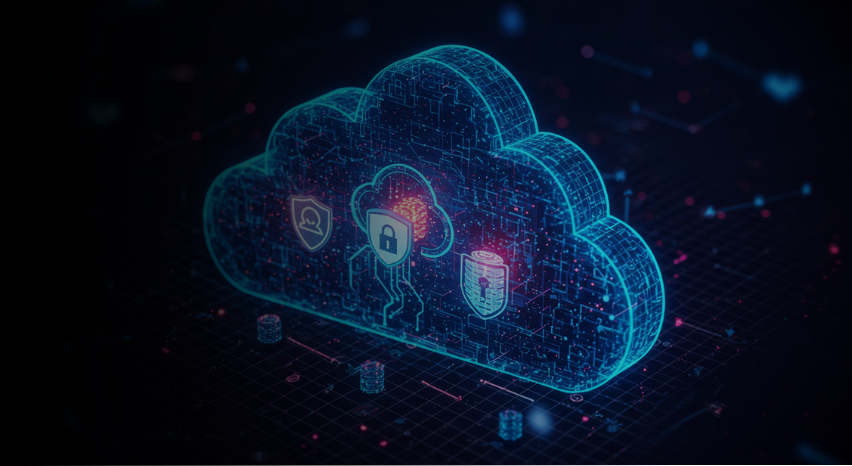Unlocking the Future of Cloud Protection
Learn the best practices and latest trends in cybersecurity from industry experts.
01 / Blog Article
Unlocking the Future of Cloud Protection
In a world driven by digital transformation, cloud computing has become a cornerstone of modern business operations. Offering scalability, flexibility, and cost efficiency, it empowers organizations to innovate and adapt. However, these benefits come with unique security challenges.
This comprehensive guide explores the evolving landscape of cloud security, addressing challenges, dispelling myths, and providing actionable strategies to build a secure, future-ready cloud environment.
The Rise of Cloud Computing: An Era of Transformation
Cloud computing began revolutionizing businesses in the early 2000s, with pioneers like Amazon, Google, and Microsoft leading the way. Today, approximately 70% of businesses rely on cloud services, ranging from SaaS tools to IaaS platforms like AWS. The flexibility and scalability of these services have fundamentally transformed IT operations.
However, this shift comes with risks. Cloud adoption essentially involves outsourcing infrastructure management, which introduces third-party risks, including data exposure, compliance challenges, and reduced control over infrastructure.
Dispelling Cloud Security Myths
Before diving into cloud risks and challenges, let’s address some common myths:
Myth 1: The Cloud is Less Secure than On-Premises Systems
This misconception arises from the psychological comfort of physical servers. Cloud providers implement advanced security measures, offering tools for visibility, encryption, and automation. However, organizations must use these tools effectively to ensure security.
Myth 2: Multi-Cloud Strategies are Always Safer
While adopting multiple cloud providers can reduce vendor lock-in, it often increases complexity without providing proportional security benefits. Choosing a single provider that aligns with your needs may offer better security and efficiency.
Understanding Cloud Security Challenges
Cloud computing introduces significant security challenges that CISOs and IT leaders must address, including:
1. Misconfigurations
These are the leading cause of cloud security failures, exposing sensitive data and infrastructure. Common examples include:
- Open servers
- Exposed AWS access keys
- Publicly accessible S3 buckets
2. Cybersecurity Threats
Cloud environments are prime targets for cyberattacks due to the vast amounts of data they store. Key threats include:
- Advanced Persistent Threats (APTs): Sophisticated, long-term attacks aimed at stealing sensitive data.
- Ransomware: Encrypting critical data and demanding a ransom for its release.
- Supply Chain Attacks: Exploiting vulnerabilities in third-party cloud service providers.
3. Visibility Gaps
The dynamic nature of the cloud, particularly in multi-cloud environments, makes monitoring and managing activities a daunting task.
4. Compliance and Governance Risks
Data privacy regulations such as GDPR and HIPAA add complexity. Organizations must understand where their data resides and ensure compliance across jurisdictions.
5. Insider Threats and Human Error
Even with advanced controls, mistakes and malicious insider actions remain significant risks.
Building a Resilient Cloud Security Framework
To build a resilient cloud security framework, organizations must carefully evaluate:
- Where is data stored?
- Who has access to it?
- How does it comply with regulations like GDPR or CCPA (depending on your country & industry)?
Identifying and protecting critical assets — your organization’s “crown jewels”— is essential.
A robust cloud security strategy should involve a multi-layered approach:
1. Detective Controls
- Deploy tools like SIEM (Security Information and Event Management) to monitor misconfigurations and threats.
- Use automated alerts and reporting for real-time visibility.
2. Corrective Measures
- Implement automated remediation to address configuration issues.
- Align security teams with DevOps to streamlined responses.
3. Preventative Strategies
- Shift security "left" by embedding it into the development lifecycle.
- Use infrastructure-as-code (IaC) tools to maintain consistent security configurations.
4. Identity and Access Management (IAM)
- Centralize access controls.
- Enforce multi-factor authentication (MFA) and least privilege principles.
5. Data Governance
- Classify data based on sensitivity.
- Implement Data Loss Prevention (DLP) solutions to prevent unauthorized access or transfer.
6. Disaster Recovery
- Utilize cloud-based disaster recovery solutions.
- Maintain regular backups and test incident response plans.
Future Trends in Cloud Security
The next wave of cloud security will be defined by:
1. AI and Machine Learning: Automating threat detection and improving response times.
2. Zero Trust Architectures: Eliminating implicit trust and requiring continuous verification.
3. Edge Computing Security: Protecting data at the edge as IoT adoption grows.
Key Takeaways
To navigate the evolving landscape of cloud security, organizations must:
- Identify and protect critical assets.
- Adopt a multi-layered security approach, focusing on detection, correction, and prevention.
- Leverage advanced tools and frameworks for compliance and visibility.
By embracing these strategies, businesses can transform cloud security from a challenge into a driver of innovation and growth.

Protect your business with Paratus
Ready to get started? Fill out the form below and we'll get back to you in no time!

risk decrease